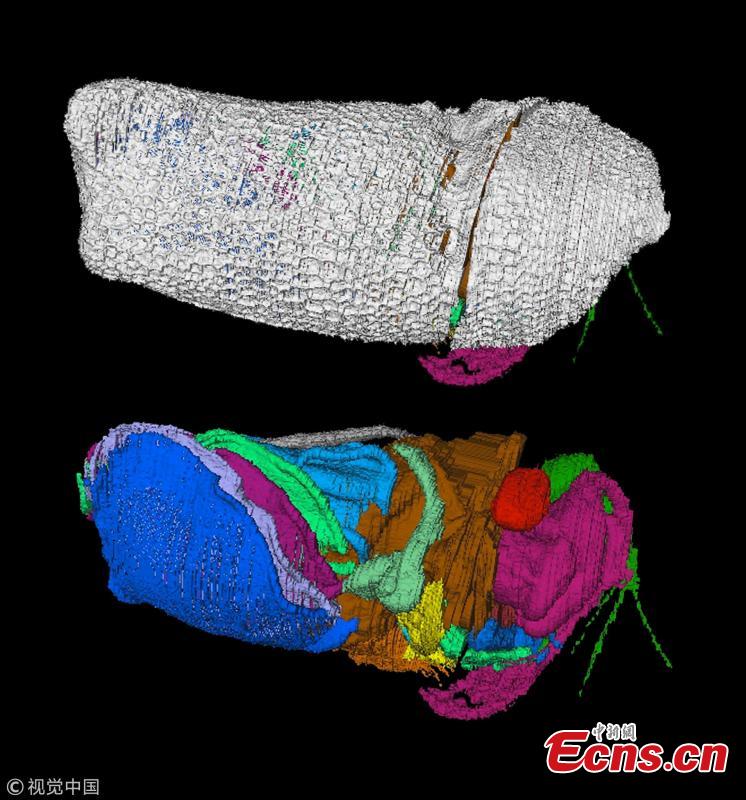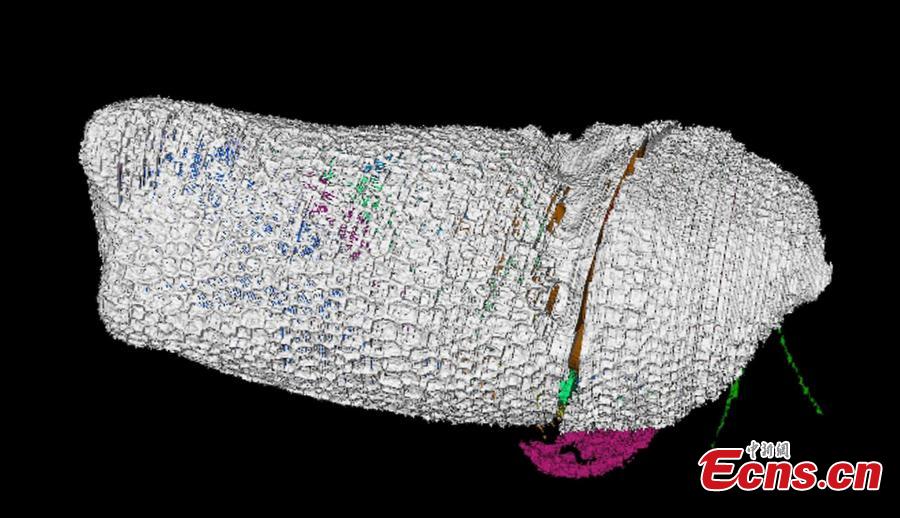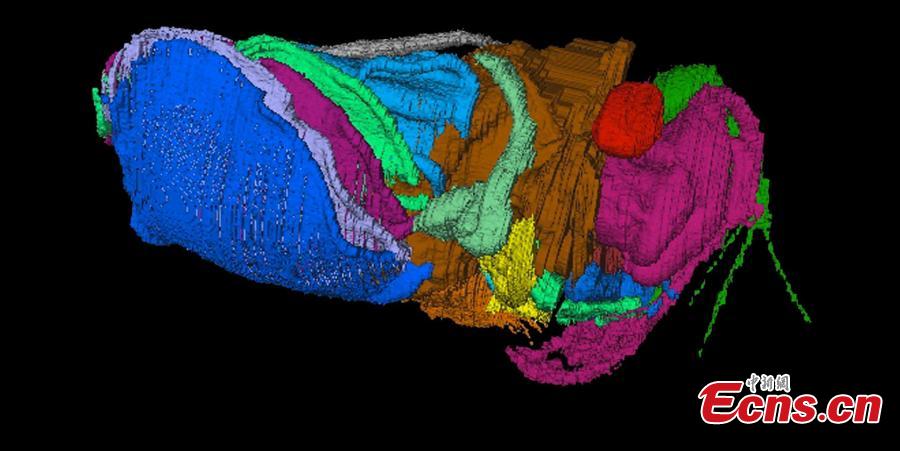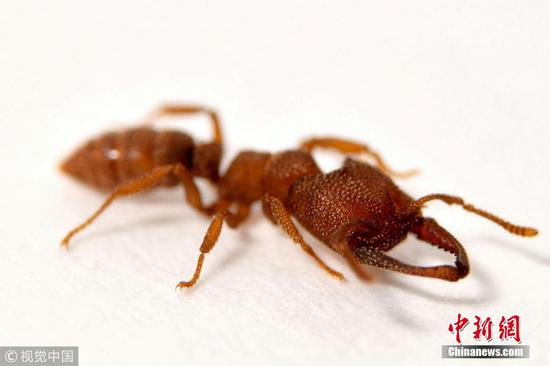
Virtual reconstructions of the new 430 million-year-old crustacean Spiricopia aurita, which is 7.5 mm long. A new animal species related to crabs and shrimp, preserved in 430-million-year-old rocks in Herefordshire, England, presents a rare look at the respiratory organs of a tiny crustacean. A team of scientists from Yale, the University of Leicester, Oxford, and Imperial College London announced the discovery Nov. 7 in a study in the Royal Society journal Biology Letters. The new species is named Spiricopia aurita, from the Latin words for "breath of life," "abundance," and "ears," referring to the preservation of gills and the shape of the carapace. (Photo/VCG)

Virtual reconstructions of the new 430 million-year-old crustacean Spiricopia aurita, which is 7.5 mm long. A new animal species related to crabs and shrimp, preserved in 430-million-year-old rocks in Herefordshire, England, presents a rare look at the respiratory organs of a tiny crustacean. A team of scientists from Yale, the University of Leicester, Oxford, and Imperial College London announced the discovery Nov. 7 in a study in the Royal Society journal Biology Letters. The new species is named Spiricopia aurita, from the Latin words for "breath of life," "abundance," and "ears," referring to the preservation of gills and the shape of the carapace. (Photo/VCG)

Virtual reconstructions of the new 430 million-year-old crustacean Spiricopia aurita, which is 7.5 mm long. A new animal species related to crabs and shrimp, preserved in 430-million-year-old rocks in Herefordshire, England, presents a rare look at the respiratory organs of a tiny crustacean. A team of scientists from Yale, the University of Leicester, Oxford, and Imperial College London announced the discovery Nov. 7 in a study in the Royal Society journal Biology Letters. The new species is named Spiricopia aurita, from the Latin words for "breath of life," "abundance," and "ears," referring to the preservation of gills and the shape of the carapace. (Photo/VCG)























